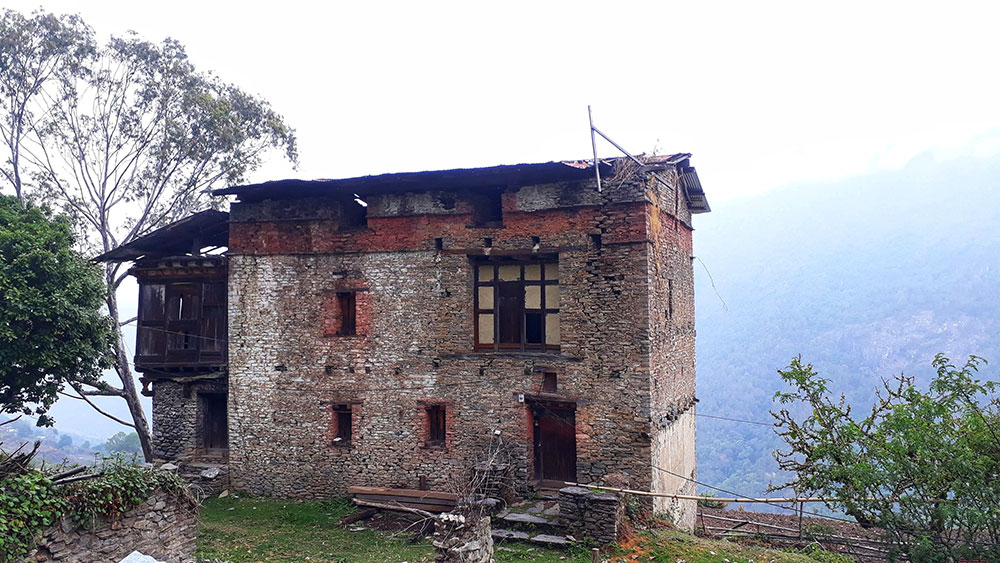Neten Dorji | Kanglung
Phongmey, a village in Trashigang, is home to the remnants of Nagtshang, a once magnificent monument that continues to command attention even centuries after it was abandoned. Standing opposite the gewog centre, the ruins bear witness to a bygone era, its wooden roof sinking, smoke-stained walls marred with deep cracks, and worn-out wooden stairs and floor planks.
Nagtshang’s story and historical significance can only be pieced together through scarce oral sources. According to local legend, it was once used by Phub Tshering, the drungpa or the region’s chief, in the early 1980s.
The history of Nagtshang, a three-storey traditional house, is shrouded in mystery. While no one knows for certain when or how it was constructed, local belief places its age at more than 100 years, indicating a likely origin around 1890.
Phub Tshering is said to have used the renowned Nagtshang after being appointed as the drungpa, or administrative head of Phongmey village, in 1890. Phub Tshering, a native of Bumthang, was appointed Drungpa by Trongsa Penlop Ugyen Wangchuck.
According to Tashi Dorji, 58, who conducted preliminary research on Nagtshang, the manor house served as the Drungpa’s residence and office, overseeing regional governance.
The structure was used for storing taxes collected in the area, in addition to housing. The ground floor served as a jail, the middle floor as a tax storage facility, and the third floor as a residence and office space.
Tashi Dorji said that one jail was intended for people and the other for cattle. “The servants of the drungpa used to tie cattle and keep them inside until the owners paid fines or compensation when the cattle entered a field called Langchen.”
Nagtshang was the residence of several drungpas, including Phub Tshering, Yeadham, Lemja, Drungtshab Tenzin, Teytey, Dasho Dema, and Drungtshab Kinzang Norbu. The last occupant of Nagtshang was Drungtshab Kinzang Norbu before it was converted into a gewog centre.
It was later occupied by successors such as Zung Dorji, Tshegye, Zangju, Tshewang Druba, Sonam Wangchuk, Kota, and Pema Thinley after it became the gewog office under the first gup, Therchung.
A 72-year-old resident of Phongmey expressed concern about the fading narrative surrounding Nagtshang. “Today, none of the residents occupy the home. With the abandonment of Nagtshang, we are losing a very important narrative.”
He said that restoring the Nagtshang to its former glory and establishing a museum that could attract tourists in the future, particularly with the nearby Sakteng-Merak bypass.
Phongmey gup, Namgyel Wangdi, said that Nagtshang is privately-owned, limiting the gewog administration’s ability to renovate. He emphasised the dangers of restoration efforts because of the extensive damage to the wooden components.


